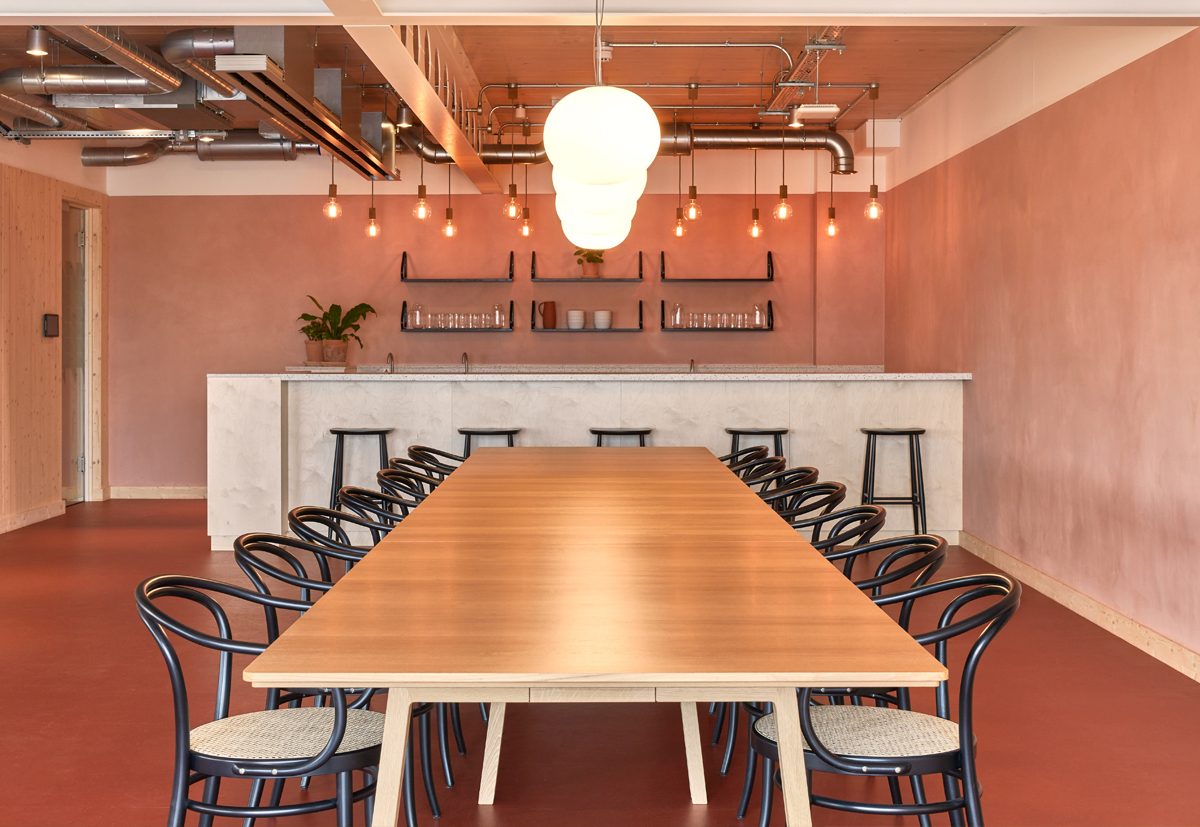
6 Orsman Road
Office design in a post pandemic world: sustainable, healthy and flexible.
Storey has unveiled 6 Orsman Road, on the banks of Regent’s Canal in the creative hub of Haggerston. The sustainably focused office building comprises 34,000 sq. ft. across five floors and has been designed to enhance productivity.
The building champions the use of sustainable materials and has been built using an innovative hybrid structure which combines cross laminated timber (CLT) and steel, meaning that the whole building can ultimately be demounted and repurposed.
Clayworks Clay Plasters in soft, calm, yet refreshing pinks and reds have been used on many of the surfaces. In the event of a demounting, the clay plasters are fully compostable as they are all natural.
Championing sustainable materials
Designed by leading architectural practice Waugh Thistleton Architects, Storey’s 6 Orsman Road is championing the use of sustainable materials for flexible offices. The building’s design is aligned to the core principles of sustainability and throughout the design process there has been a focus on reducing environmental impact by reusing or recycling materials where possible. At 6 Orsman Road a cross-laminated timber (CLT) structure has been used to reduce the building’s impact on the environment, as compared to concrete and steel CLT production requires less water and energy to manufacture. CLT is also exposed internally at 6 Orsman Road, minimising the number of finishes used on the structure, and the offcuts from the building have been repurposed to make furniture within the shared spaces of the building.
Clay Plasters, which are 100% natural and zero waste, have one of the lowest carbon foot prints of all surface materials, saving around 2.4kg of carbon emissions compared to the conventional plaster & paint combination.

To further enhance the sustainability of the building, 6 Orsman Road has photovoltaic cells on the roof which are a renewable energy source. The expansive rooftop terrace has been designed by landscaper FFLO and is biodiverse, featuring a brown roof, insect boxes, edible plants and fruit trees.
Designed to enhance productivity and wellbeing
Everything at 6 Orsman Road, from the exposed timber & clay plasters, to the waterside setting, has been designed to make customers feel calm, focused and inspired. Storey worked with leading acousticians Sandy Brown to develop acoustics guidelines for the office, with maximum use of sound absorbing materials to improve comfort different spaces. Clay plasters are widely recognised for their acoustic absorbing properties.
Throughout 6 Orsman Road a full range of all-natural materials have been used. Marmoleum tiles complement the clay and wood, and all combine with natural daylight and air-purifying plants come to create a working environment that actively boosts productivity and improves wellbeing. Studies by the World Health Organisation have found that the use of biophilic design can increase office productivity by 8% and wellbeing by 13%, and companies with timber interiors report higher staff retention, and fewer employee sick days.
Natural materials such as clay and wood do not emit VOCs or formaldehydes. Clay is 100% natural with no additives. A major study in 2015 showed that people who work in well-ventilated offices with below-average levels of indoor pollutants and carbon dioxide (CO2) have significantly higher cognitive functioning scores – in crucial areas such as responding to a crisis or developing strategy – than those who work in offices with typical levels. (Harvard T.H. Chan School of Public Health’s Center for Health and the Global Environment, SUNY Upstate Medical University, and Syracuse University).
Tranquil, canal side location in London’s latest creative hub
6 Orsman Road is located in a prime position on the bank of the tranquil Regent’s Canal in Haggerston, between Shoreditch, Hoxton and Dalston. Haggerston benefits from fantastic cycling routes across London and the offices have rooftop terraces with panoramic views across London.
Thanks to Waugh Thistleton for the use of photographs.
For more pictures please see our gallery feature.

